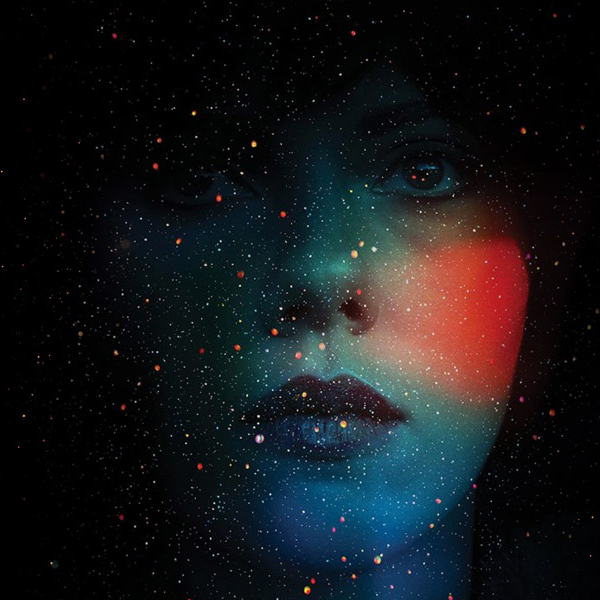By Jenna Dreisenstock
The auditory experience of the visual media we consume is automatically thought of as – scores, music that accompanies the narrative. It’s quite obvious, and celebrated too. However, amongst the score embraces in companionship sound design – this refers to the ways in which sound designers create atmospheres by piecing together sound in a way that’s different to the media score. Sound design in film, gaming and television is actually often unnoticed when the work of the designer is extremely well done, and those with a keen ear and immersion are usually those who pick up on the atmosphere behind the atmosphere: the exceptionally artful ways in which the worlds are crafted may perhaps drive one’s mood with the score – but underneath the narrative, disregarding the score or visuals – there is a whole separate auditory experience, which affects our experience in ways we may not even know.
In celebration of the world of sound design, we have compiled a list of films and video games that fuel the way in which we experience media. I have purposefully left out more mainstream knowledge of sound design such as the incredible designs in David Lynch works or films such as No Country for Old Men and rather focus on some of the more underrated titles – however, some titles are more regarded than others in pop-culture communities and may be more well known.
Here are some of our favourite titles in which the sound design blew us away:
Samurai Jack (2001 – 2004) (2017)
The exceptionally beautiful, highly acclaimed animated series Samurai Jack is quite simply a masterpiece in terms of sound design. With very cleverly timed, yet only occasional music and limited dialogue, the stunningly minimalist auditory experience of Samurai Jack is incredibly immersive in terms of its use; accompanying Jack on his journey, the cleverly constructed design creates new worlds of atmosphere in each adventure – whether it be tension and anxiety, reflection and introspection: feelings of pure isolation – of Jack’s always alert awareness, and never knowing what will come next.
Horizon Zero Dawn (2017)
In this brilliantly vivid, lush and breathtaking open-world video game, the skillful use of sound design engulfs the player in pure experience of what the Horizon Zero Dawn world has to offer. Set in a post-apocalyptic world, in which sentient, and mostly hostile machines roam the lands like animals, the way of life which was once known has settled into an environment where the past ruins of humanity have been reclaimed by nature. Exploring the incredible atmosphere as protagonist Aloy, exploring the isolated, lonely and unforgiven landscapes: as despite the world’s brilliant natural beauty, the true desolation of her journey graces us with mechanical groans far off in the distance, creaking and wailing; machine drones and robotic hums – within the chirping of the crickets and glowing fireflies.
The Pretty Little Thing That Lives in The House (2016)
An underrated Netflix gem, The Pretty Little Thing That Lives In The House is a brilliantly executed horror film; especially in terms of how the designers used their soundscapes and spoken word to keep us on the edge of our seats. A slow burner in which the tension builds within one’s chest to the point of pure dread, the minimalist film does an incredible job of building and layering atmosphere to the point in which one is truly terrified by each auditory experience, the anxiety of noise within the house and the tension of…waiting.
The Tree Of Life (2011)
The Tree Of Life by Terrence Malik is one of those films that truly takes one on a traverse through their own consciousness, a narrative and visual experience steeped in visceral life – as the story intertwines further with beautiful visual experiences of Birth, Death and everything in between, venturing into the very beginnings of it all: the creative and dynamic work of the sound designers guide us in this metaphysical experience, the foundation of life for the narrative of life.
Silent Hill (Original Game Franchise 1999 – 2004)
The original Silent Hill franchise is regarded as a landmark in the horror genre of video games – and despite looking back at clunky graphics, even all the way back at the games releases: the driving slow burning tension of the terrors of Silent Hill would not be complete without the innovative use of sound design. Creating feelings of extreme anxiety, the terrifying nature of complete human isolation in monstrous world is captured to a tee with clever uses of silence in which one finds themself hoping for some sort of noise as a direction or light at the end of the tunnel- or cumbersome dread, an atmosphere that keeps one so terribly afraid of the unknown.
Under The Skin (2014)
Another title that relies heavily on its sound design to shape that fear we have of the unknown – that makes our skin crawl in it’s disturbing nature: Under The Skin engages the viewer in this almost uncomfortable atmosphere, disturbing in claustrophobia as the truths evolve with frightening imagery and simplistic, minimal panic; the sci-fi thriller is not only a visual rollercoaster but a perfect example of how clever use of sounds can create such immersive experiences.
Solaris (1972)
Speaking of sci-fi thrillers, this 1972 film by Andrei Tartovksy is an exceptionally apt example of how silence, ambience and melodrama can all work together to create the entire tone of the film. Set on a spaceship far from Earth, and with only two others who seem to be slowly losing their minds, the use of silence is so incredibly disconcerting as it allows you into the footsteps of the protagonist; a constant feeling of uneasiness in such desolation and such limited space, the use of sound and silence captures the viewer as the claustropia of the ship: and the blurring line between fantasy and reality.
Fatal Frame (Project Zero: 2001 – 2014)
Fatal Frame (aka Project Zero) is a Japanese video game series that is a horror experience like no other: and highly underrated. With the protagonists finding themselves exploring desolate towns and abandoned buildings, with only a camera in hand, allowing for protection against benevolent, moaning and wailing spirits – the auditory experience forms a soundation to the true immersion. With the chime of bells gracing us unexpectedly, the cries of long lost spirits waiting for us in the shadows; silence and evening ambient in true isolation. Each creak in the floor, the whispered sounds of voices crying out; dark passageways in silence. The ambience of Fatal Frame due to its sound design truly terrifies.
Perfect Blue (1998)
Another Japanese gem that needs to be on this list is Perfect Blue, a film directed by Satoshi Kon – essentially the incredible stylistic, animated predecessor to Darren Aronofsky’s adaption of Black Swan. Perfect Blue stings as thriller, a haunting experience in which the dynamic use of sound draws us into the haunting of trepidation of blurred lines between reality and fantasy, of horror and gore and spiralling into madness – Perfect Blue uses it’s auditory traverse to lure the viewer into the hypnotic world.
The Last of Us (2013)
The critically acclaimed video-game The Last of Us follows protagonists Joel and Ellie on their traverse through a post-apocalyptic world in which ‘the infected’ are at every turn, groaning and wailing and the difference between life and death. The atmosphere created by the sound design builds suspense in stealth and action; exploring the landscapes while trying to survive, the minimalist use of design brings forth lovingly alienating guitar in solation, to silence and the far off clicks and stutter of the monsters; buildings creaking, footsteps in the near distance – shrieking from afar. The Last of Us, in all its glory has an equally artful sound design behind it’s narrative which creates a kind of panic that sits like a lump in one’s throat.
Often times we notice the atmospheres created by sound design: the engulfing soundscapes, the trickling ambience – foleys and samples and a combination of tone and timbre which builds an experience like no other. To create such intricate and cleverly used sound design can either make or break a piece of media and these are just a few examples of titles that took sound design and its powerful ability to push the narrative to a new level.




